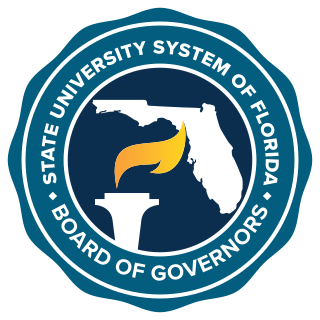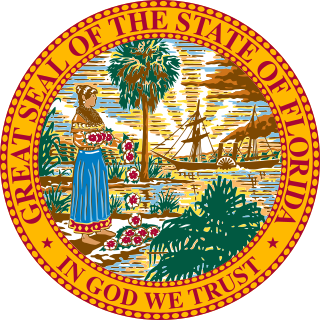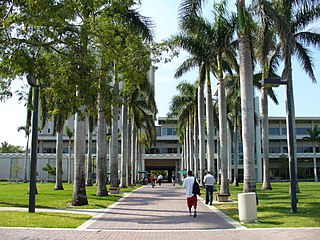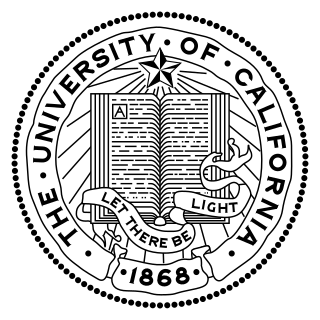
The University of the State of New York is the state governmental umbrella organization that oversees all educational institutions, including schools, libraries, and museums in New York State. It is governed by the Board of Regents.
The State University System of Florida is a system of twelve public universities in the U.S. state of Florida. As of 2018, over 341,000 students were enrolled in Florida's state universities. Together with the Florida College System, which includes Florida's 28 community colleges and state colleges, it is part of Florida's system of public higher education. The system, headquartered in Tallahassee, is overseen by a chancellor and governed by the Florida Board of Governors.

The Utah System of Higher Education (USHE) is the public university system of the state of Utah. It includes each of the state's sixteen public institutions of higher education, including its eight technical colleges.

The Supreme Court of Florida is the highest court in the U.S. state of Florida. It consists of seven justices—one of whom serves as Chief Justice. Six members are chosen from six districts around the state to foster geographic diversity, and one is selected at large.

The Florida Board of Governors is a 17-member governing board that serves as the governing body for the State University System of Florida, which includes all public universities in the state of Florida.
Florida Student Association was formed in 1976 and is a non-profit corporation composed of the student body presidents from each of the State University System of Florida universities.

The Constitution of the State of Florida is the document that establishes and describes the powers, duties, structure, and function of the government of the U.S. state of Florida, and establishes the basic law of the state. The current Constitution of Florida was ratified on November 5, 1968.
The Constitution of the State of South Carolina is the governing document of the U.S. state of South Carolina. It describes the structure and function of the state's government. The current constitution took effect on December 4, 1895. South Carolina has had six other constitutions, which were adopted in 1669, 1776, 1778, 1790, 1865 and 1868.

The Florida Cabinet is a body of the government of Florida comprising the attorney general, the commissioner of agriculture, and the chief financial officer that engages in the collective governance of the state.
In the United States, a board often governs institutions of higher education, including private universities, state universities, and community colleges. In each US state, such boards may govern either the state university system, individual colleges and universities, or both. In general, they operate as a board of directors, and they vary by formal name, size, powers, and membership. In some states, members are appointed by the governor.

The government of Texas operates under the Constitution of Texas and consists of a unitary democratic state government operating under a presidential system that uses the Dillon Rule, as well as governments at the county and municipal levels.

The Regents of the University of Michigan, sometimes referred to as the Board of Regents, is a constitutional office of the U.S. state of Michigan which forms the governing body of the University of Michigan, University of Michigan–Flint, and University of Michigan–Dearborn.

The Florida education system consists of public and private schools in Florida, including the State University System of Florida (SUSF), the Florida College System (FCS), the Independent Colleges and Universities of Florida (ICUF) and other private institutions, and also secondary and primary schools as well as virtual schools.

The Oklahoma State Regents for Higher Education is the agency of the government of Oklahoma that serves as the governing body of the Oklahoma State System of Higher Education, which is the largest provider of higher education in the state of Oklahoma. The State System consists of all institutions of higher education in Oklahoma that are supported by direct legislative appropriations from the Oklahoma Legislature.
The Arizona Board of Regents (ABOR) is the governing body of Arizona's public university system. It provides policy guidance to Arizona State University, Northern Arizona University, the University of Arizona, and their branch campuses.
The University of Central Florida Board of Trustees is the governing body of the University of Central Florida, a space-grant university located on a 1,415-acre (5.73 km2) main campus in Orlando, Florida, United States. UCF is a member institution of the State University System of Florida and is the largest public university in the United States.
The University of Central Florida Student Government is the student body government for the University of Central Florida, a metropolitan public research university located in Orlando, Florida, United States. It is the largest Student Government within the state of Florida and one of the largest in the United States. It also often places in the top ten Student Governments nationally for the services and outreach it provides for the students it serves. SG also serves as the liaison between the student body and University Administration. The Executive, Legislative and Judicial branches as well as the Election Commission are governed by the student-adopted Constitution.

The student regent is a position on the University of California Board of Regents created by a 1974 California ballot proposition to represent University of California (UC) students on the university system's governing board. Student regents serve an approximately one-year term as 'student regent-designate', followed by a one-year term as a full voting member of the Regents. The current Student Regent is Merhawi Tesfai, a graduate student from UCLA. The Regent-Designate is Josiah Beharry, a graduate student from UC Merced.
The Board of Regents of the University of the State of New York is responsible for the general supervision of all educational activities within New York State, presiding over the University of the State of New York and the New York State Education Department.

Florida Amendment 8 is an amendment to the Florida state constitution that was passed on November 3, 1998. This amendment, which had first been put forth by the Florida Constitutional Revision Commission, amended articles 2, 3, 4, 8, 9, 11, and 13 of Florida's state constitution in an attempt to restructure the cabinet.











